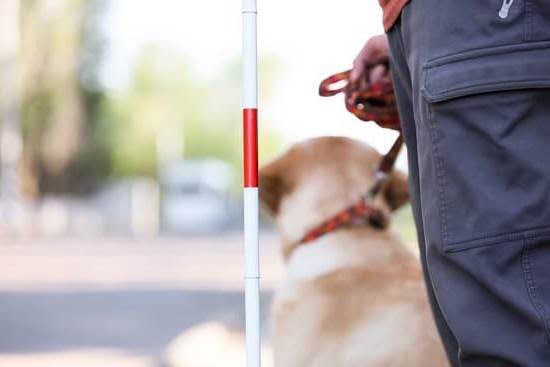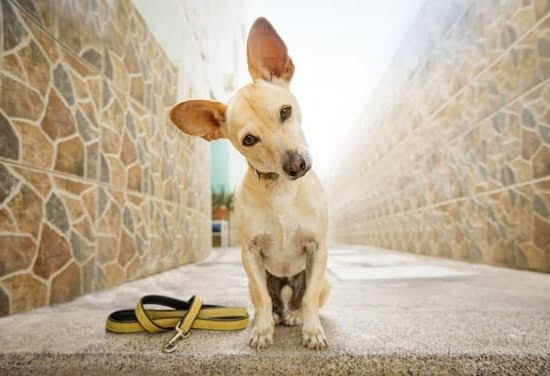Are you wondering how to train a dog to touch? Touch training for dogs is an essential skill that has numerous benefits for both the pet and the owner. This article will guide you through the process of touch training, from understanding its importance to incorporating it into everyday life. Touch training not only strengthens the bond between the owner and their furry companion but also serves as a foundation for teaching more advanced commands and tricks.
The first section of this article will delve into the significance of touch training for dogs. From improving communication to enhancing obedience, touch training offers a range of benefits that contribute to a harmonious relationship between a dog and its owner. By exploring these advantages, we can gain a deeper understanding of why touch training is an essential component of canine education.
Additionally, we will discuss how touch training plays a pivotal role in strengthening the bond between a dog and its owner. Establishing trust and positive reinforcement through touch training creates a deeper connection, ultimately leading to greater cooperation and mutual understanding. This section will highlight the emotional impact of touch training on both the dog and its owner, emphasizing its role in building a strong and enduring relationship.
Getting Started
When preparing for touch training with your dog, it’s essential to gather the necessary tools and equipment to ensure a smooth and successful training process. One of the key items you’ll need is a clicker or a verbal marker to indicate the precise moment when your dog performs the desired behavior. Additionally, having high-value treats that your dog finds irresistible will be crucial in motivating them during training sessions.
Creating a positive and safe environment for touch training is equally important. Choose a quiet and familiar space where your dog can focus without distractions. Remove any potential hazards or items that could cause harm during training. It’s also beneficial to have a comfortable mat or designated area where your dog can relax between training exercises.
Remember to approach touch training with patience and a positive mindset. Dogs respond best to gentle guidance and encouragement, so maintaining a calm demeanor and providing ample praise will contribute to a more productive learning experience. By ensuring that you are well-prepared and setting the stage for successful touch training, you are laying the groundwork for effective communication and bond-building with your furry companion.
Teaching the Basics
Luring and shaping are two essential techniques for teaching dogs to touch. These methods provide a foundation for effective communication between the owner and their pet, laying the groundwork for successful touch training.
Using luring, a dog can be guided to touch a specific target, such as a hand or object, by following a food reward. This technique is especially useful for dogs that are motivated by food and treats, as it encourages them to associate the act of touching with a positive outcome.
On the other hand, shaping involves breaking down the desired behavior into smaller, manageable steps. This allows the dog to understand what is expected of them gradually, making the training process more accessible and less daunting. By rewarding incremental progress towards the ultimate goal of touching, shaping reinforces and solidifies the behavior in the dog’s repertoire.
Both luring and shaping require patience and consistency from the owner. It is crucial to establish clear communication with your dog during these training sessions by using consistent verbal cues and body language.
Understanding your pet’s individual learning style and motivations will also play a significant role in determining which method – luring or shaping – will be most effective for teaching your dog to touch. By mastering these foundational techniques, owners can set their dogs up for success in touch training and build a stronger bond based on trust and understanding.
Step-by-Step Guide to Teach Your Dog to Touch
Teaching a dog to touch is a fundamental skill that can be incredibly useful in various training scenarios. Here, we will break down the process into easy-to-follow steps to help you successfully teach your dog to touch.
Step 1: Introducing the Target
Start by introducing your dog to the target object, which can be anything from a stick to a specific part of your hand. Allow your dog to investigate the target and reward any interaction with it, such as sniffing or looking at it.
Step 2: Encouraging Touch
Once your dog is comfortable with the target, begin encouraging them to touch it with their nose or paw. You can do this by holding the target near their nose and rewarding any attempt to make contact with it.
Step 3: Adding the Command
As your dog becomes more consistent in touching the target, introduce a verbal command such as “touch” or “target”. Say the command just before presenting the target, and reward your dog for following through.
Tips for Success
- Use high-value treats or rewards to motivate your dog during training sessions
- Keep training sessions short and positive to maintain your dog’s engagement
- Gradually increase the distance between your dog and the target to generalize the touch command
By following these steps and being patient with your dog, you can effectively teach them to touch on command, laying the foundation for more advanced training exercises.
Troubleshooting Common Challenges
When it comes to touch training for dogs, there are common challenges that owners may encounter. Addressing these issues is crucial in ensuring that the training process goes smoothly and effectively. Here are some common challenges and strategies for overcoming them:
1. Lack of Interest or Motivation: Some dogs may initially show a lack of interest or motivation in touch training. This can be overcome by finding the right motivators for your dog, whether it’s treats, toys, or verbal praise. Experiment with different rewards to find what your dog responds to best.
2. Fear or Apprehension: If your dog shows fear or apprehension towards the touch command or the object being targeted, take a step back and work on building their confidence. Gradually introduce the concept of touch in a calm and reassuring manner, using positive reinforcement to create a positive association with the training.
3. Difficulty Generalizing the Command: Dogs may struggle with generalizing the touch command from one object to another or from one environment to another. To address this challenge, practice the touch command with various objects and in different settings to help your dog understand that the command applies across different scenarios.
By troubleshooting these common challenges effectively, you can ensure that your dog’s touch training progresses smoothly and leads to a strong bond between you and your furry companion. With patience, consistency, and positive reinforcement, any obstacles can be overcome, ultimately resulting in a well-trained and responsive dog.
Generalizing the Touch Command to Different Objects
Expanding the Training
Once your dog has mastered touching your hand or a specific target, it’s time to expand their training to include different objects and surfaces. This helps reinforce their understanding of the touch command and ensures that they can perform it in various situations. Start by introducing new objects that are similar to the original target, such as a small plastic lid or a soft toy. Gradually transition to more diverse items, including harder, softer, rougher, and smoother textures.
Introducing Different Surfaces
Another important aspect of generalizing the touch command is teaching your dog to touch different surfaces. This could include carpet, tile, wood, grass, or gravel. By practicing the touch command on various surfaces, you’ll help your dog associate the behavior with different environments. Remember to be patient and provide plenty of positive reinforcement during this phase of training.
Ensuring Versatility
The ultimate goal of generalizing the touch command is to ensure that your dog can perform this behavior in any situation. Whether you’re at home, in a park, or out for a walk, your dog should be able to respond to the touch command consistently. To achieve this level of versatility, gradually introduce distractions and changes in environment during training sessions. This will help your dog generalize the touch command and apply it effectively in real-life scenarios.
Incorporating Touch Training Into Everyday Life
Once your dog has mastered the touch command, it’s time to incorporate this skill into their daily routine. By doing so, you can reinforce their training and further improve obedience and behavior. One simple way to integrate touch training is by using it during meal times. Have your dog touch your hand before giving them their food as a way to make them earn their meal, promoting good behavior and manners.
Additionally, you can use touch training during walks or outdoor activities. For instance, if your dog gets easily distracted by other dogs or people while walking, you can use the touch command to redirect their attention back to you. This not only reinforces their training but also helps in maintaining control during potentially distracting situations.
Furthermore, incorporating touch training into grooming sessions can make the experience more pleasant for both you and your dog. Teaching your dog to touch a designated object during grooming allows for easier nail trimming or brushing. It also helps in desensitizing them to being touched on different parts of their body, making grooming less stressful for your pet.
| Everyday Activity | How to Incorporate Touch Training |
|---|---|
| Meal Time | Have your dog “touch” your hand before giving them their food |
| Walks/Outdoor Activities | Use the touch command to redirect attention during potential distractions |
| Grooming Sessions | Teach your dog to “touch” a designated object for easier grooming |
Beyond Touch
Touch training is a fundamental skill that can open the doors to more advanced tricks and commands for your dog. Once your furry companion has mastered the basic touch command, you can begin to expand their repertoire of skills and behaviors. By building on touch training, you can challenge your dog both mentally and physically, while further strengthening your bond with them.
Here are some advanced skills that you can explore after mastering touch training:
- Targeting Different Body Parts: Once your dog understands the concept of touching a target with their nose, you can teach them to target with other body parts such as their paw or even their chin.
- Retrieving Objects: Building on the touch command, you can train your dog to pick up and retrieve specific objects, bringing them back to you upon command.
- Turning Lights On/Off: It is possible to train certain breeds to reach up and turn on/off light switches using the same principles of touch training.
These advanced skills not only provide mental stimulation for your dog but also demonstrate the strong level of communication between you and your furry friend. Furthermore, these activities promote physical activity and creativity in training sessions.
Continuing to build on touch training will not only serve as an opportunity for bonding and fun with your dog but also showcases their intelligence and ability to learn new tasks. By incorporating these advanced skills into your training regimen, you’ll be able to keep your pet engaged and continue strengthening the connection between both of you.
Conclusion
In conclusion, touch training is not just a method for teaching your dog to perform a specific command. It is an opportunity to deepen the bond between you and your canine companion. By understanding the importance of touch training and taking the time to get started on the right foot, you are not only teaching your dog a valuable skill, but also fostering trust and communication in your relationship.
As you progress through the step-by-step guide and troubleshoot common challenges, remember that patience and consistency are key. Celebrate each milestone as you work with your dog to generalize the touch command to different objects and incorporate it into everyday life. The journey of touch training is not just about reaching an end goal; it’s about enjoying the process and celebrating the progress along the way.
Ultimately, touch training goes beyond just teaching your dog to touch an object on command. It is about celebrating the unique bond that you share with your canine companion, built on trust, communication, and mutual understanding. As you continue to build on this foundation through touch training and other advanced skills, take pride in the progress you’ve made and savor every moment spent with your beloved pet.
Frequently Asked Questions
How Do You Teach a Dog to Touch?
Teaching a dog to touch can be done using positive reinforcement. Start by presenting your hand to the dog and rewarding them with a treat when they touch it with their nose.
You can also use a clicker to mark the behavior and then give them a treat. Repeat this process consistently, gradually adding a verbal cue such as “touch” until the dog reliably responds to the command.
How Do I Get My Dog Used to Touch?
Getting your dog used to touch involves desensitization and gradual exposure. If your dog is uncomfortable being touched, start by simply placing your hand near them without making physical contact.
Gradually work up to gently petting or stroking them, always paying attention to their body language and stopping if they show signs of discomfort. It’s important to move at your dog’s pace and make it a positive experience for them.
How Can I Make My Dog Happy With Touch?
Making your dog happy with touch involves understanding and respecting their individual preferences. Some dogs may enjoy being petted on their chest, while others may prefer scratches behind the ears.
Pay attention to how your dog responds to different types of touch and respect their boundaries. Creating a positive association with touch through treats and praise can also help make the experience enjoyable for them.

Welcome to the blog! I am a professional dog trainer and have been working with dogs for many years. In this blog, I will be discussing various topics related to dog training, including tips, tricks, and advice. I hope you find this information helpful and informative. Thanks for reading!





